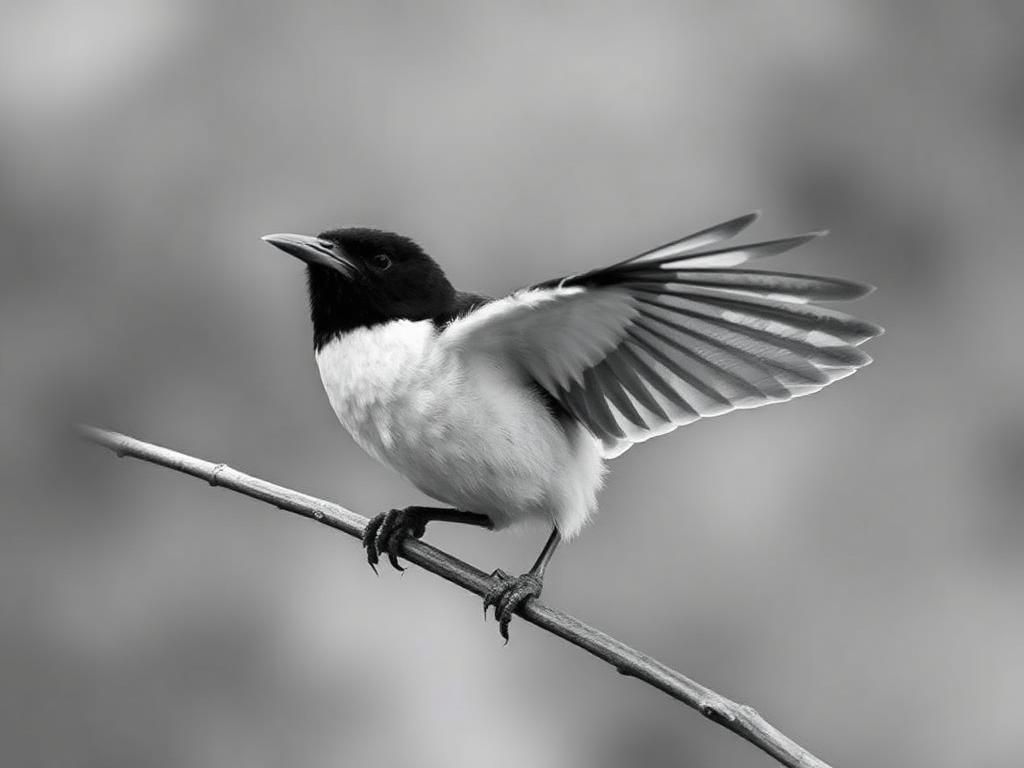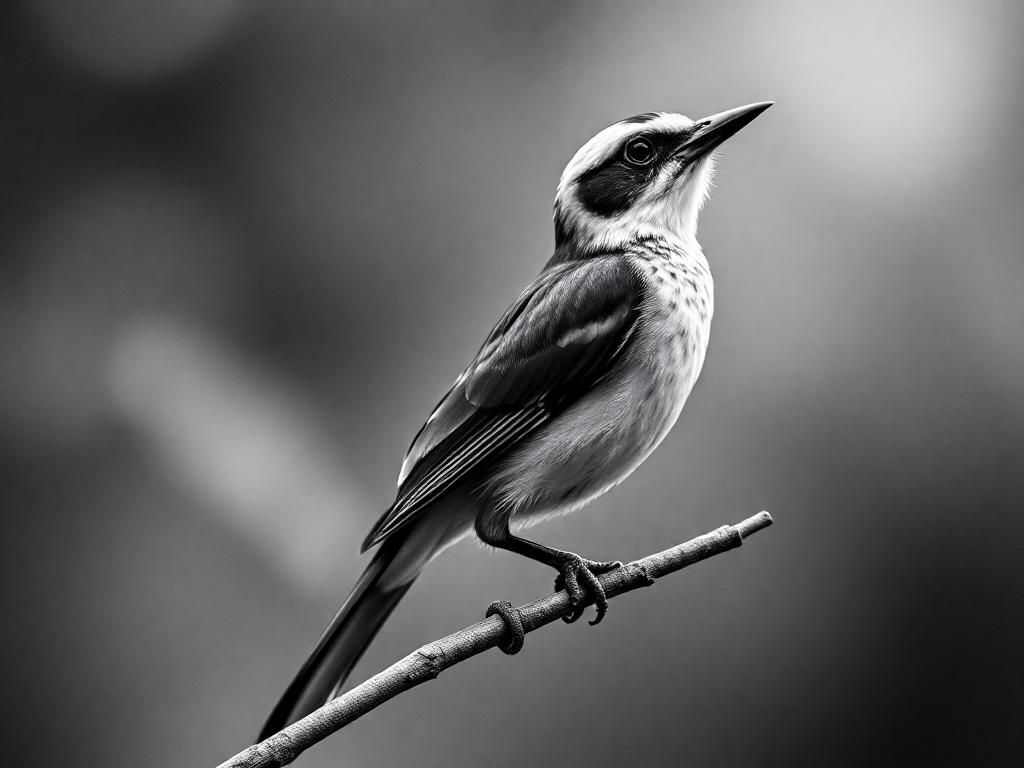Birds exhibiting black and white plumage captivate our imagination with their striking appearance and rich symbolism. The stark contrast of these colors not only influences their aesthetic appeal but also carries deep cultural significance across various societies. Many cultures celebrate black and white birds in folklore, art, and literature, eagerly assigning meanings such as mystery, elegance, and even wisdom. In this article, we will delve into the science behind bird black and white coloration, explore notable species, and discuss their conservation challenges while providing insight into their social structures and cultural impacts.
The Science of Black and White Plumage
Genetics of Plumage Coloration
The coloration of bird black and white plumage primarily results from the presence of melanin, a pigment that plays a crucial role in creating black feathers. Birds produce melanin in specialized cells known as melanocytes. Various factors influence the amount and type of melanin produced, leading to the striking black colors observed in many species.
Conversely, white coloration in birds often arises from a lack of certain pigments, which can occur due to genetic mutations such as albinism or leucism. Albinism results in a complete absence of melanin, leading to white feathers and pink eyes, while leucism presents as partial loss of pigmentation.
Evolutionary Advantages
The black and white coloration in birds offers distinct evolutionary advantages. For instance, the contrasting colors can aid in camouflage, allowing birds to blend seamlessly into their environments, which helps them avoid predators. Furthermore, during mating rituals, the vivid contrast can serve as an appealing signal to potential mates, conveying good health and vitality.
One notable example is the Common Blackbird (Turdus merula). Its black plumage helps it blend into the shadows of dense forests while also providing a striking display during mating season.
Notable Black and White Bird Species
Common Black and White Birds
Pied Wagtail (Motacilla alba) is a charming example, characterized by its distinct black and white plumage. Commonly found near water bodies, these birds are known for their bobbing behavior as they search for insects and small invertebrates. Their diet primarily consists of flies and larvae.
The Black-capped Chickadee (Poecile atricapillus) is another fascinating species, easily identified by its black cap and chin, with white cheeks and a slightly grayish body. These social birds are known for their distinctive “chick-a-dee-dee-dee” calls, which vary in intensity based on the level of danger they perceive.
Exotic Black and White Birds
The Magpie (Pica pica) is an incredibly intelligent bird known for its adaptability. It can thrive in diverse environments and often displays behaviors associated with problem-solving and tool use. Additionally, the Black-billed Magpie is known for its social structures and can often be seen in large flocks.
Among the Woodpecker species, the Downy Woodpecker (Picoides pubescens) is particularly striking, exhibiting a sharp contrast of black and white plumage. They are found in a wide range of habitats and are essential for controlling insect populations.
Endangered and Rare Black and White Birds
The California Condor (Gymnogyps californianus) is one of the most endangered birds globally. Conservation efforts have been ongoing to restore its population. These majestic birds play a vital role in the ecosystem by scavenging carrion and promoting a clean environment.
The African White-backed Vulture (Gyps africanus) is another species facing challenges. Their ecological importance in the food chain as scavengers is threatened by habitat loss and poisoning. Conservation efforts are crucial to prevent their decline.
Cultural Significance of Black and White Birds
Symbolism in Different Cultures
Throughout history, black and white birds have maintained significance in various cultures. In Western mythology, crows are often viewed as omens of death or misfortune, while in other cultures, they symbolize wisdom and intelligence.

Black and white birds also appear prominently in art and music, often representing duality or balance. The contrasting colors signify not only beauty but also deeper philosophical meanings.
Notable Literature and Media
Literary works frequently reference black and white birds, like in Edgar Allan Poe’s “The Raven,” where the bird symbolizes death and the unknown. Similarly, films often use them to convey themes of mystery or transformation, enhancing the narrative depth.
Behavior and Social Structure
Communication Patterns
Communication among birds black and white is diverse and intricate. Vocalizations are essential for bonding and signaling danger; the Black-capped Chickadee is particularly known for its varied calls, which help convey different messages depending on the situation.
Visual signals, such as feather displays, are also vital in mating rituals and territory claims. These behaviors enhance social interactions and facilitate the establishment of bonds among species.
Social Dynamics
Breeding behaviors are fascinating in black and white birds. Many species form monogamous pairs, engage in elaborate courtship displays, and take part in cooperative breeding. Social structures within flocks can vary widely; for instance, the Pied Wagtail is often seen foraging in small groups, while more solitary species may establish territories.
Flocking behavior can enhance survival, improving vigilance against predators while also creating opportunities for foraging. For instance, Magpies often flock, showcasing their social nature and intelligence.
Conservation Challenges
Habitat Loss and Environmental Threats
Sadly, many black and white birds face significant threats from habitat loss due to urban development, deforestation, and climate change. These changes can drastically alter their habitats, leading to lower populations and increased competition for resources. Preservation initiatives are essential to safeguard their natural environments.
Hunting and poaching also pose threats to specific species, exacerbating their endangered status. Awareness and education are vital to combat these issues.
Community and Global Conservation Efforts
Numerous organizations worldwide, like the Audubon Society and BirdLife International, focus on conserving birds, including those with black and white plumage. These groups work to protect habitats, advocate for sustainable practices, and engage communities in conservation efforts.
Citizen science is increasingly vital, with birdwatchers contributing valuable data to help monitor populations, migration patterns, and threats to various species.
Observing Black and White Birds
Birdwatching Tips
For those looking to observe bird black and white species, it is essential to familiarize yourself with their habits and habitats. Birdwatching can be done in numerous locations, including parks, nature reserves, and along waterways, especially during migration seasons when many species travel through.

Using field guides or bird identification apps can enhance your experience, helping with identification and observation of behaviors in various environments.
Photography Techniques
Capturing the beauty of black and white birds photographically requires attention to light and contrast. Utilizing natural light during dawn or dusk can enhance the drama of the coloration.
Experimenting with different angles and backgrounds can also create stunning images. Photographers should focus on capturing the unique behaviors and interactions of these birds, maximizing storytelling through their images.
Conclusion
In summarizing, the allure of black and white birds lies not only in their striking appearance but also in their rich stories and roles within ecosystems. They embody beauty, complexity, and connection to cultural myths and meanings. As our understanding deepens, it becomes evident that engagement in conservation and appreciation for these magnificent creatures is essential. By observing and protecting them, we foster a more profound connection with nature.
References and Further Reading
– The Cornell Lab of Ornithology – https://www.allaboutbirds.org
– The Audubon Society – https://www.audubon.org
| Species | Description | Conservation Status |
|---|---|---|
| Pied Wagtail | Small bird with black and white plumage, found near water. | Least Concern |
| California Condor | Large bird known for its massive wingspan, critical scavenger. | Critically Endangered |
| African White-backed Vulture | A scavenger with white back feathers, significant ecological role. | Endangered |
| Black-capped Chickadee | Small, social bird with distinctive calls. | Least Concern |
FAQs
1. What causes black and white plumage in birds?
The pigmentation results from melanin, with black coloration produced by melanin abundance and white from the absence of pigmentation.
2. Are black and white birds more common than colorful ones?
Color variations depend on species; however, many birds display vibrant hues rather than exclusively black and white patterns.
3. How can I aid in bird conservation?
Participating in citizen science programs, supporting conservation organizations, and advocating for responsible environmental policies can help.
4. What is the significance of crows in various cultures?
Crows often symbolize intelligence, mystery, and foresight, with varying interpretations depending on cultural contexts.
5. Where can I safely observe black and white birds?
Nature reserves, parks, and wetlands serve as ideal locations for observing these birds, especially during migration seasons.
6. Are there any black and white birds that are endangered?
Yes, species like the California Condor and African White-backed Vulture face critical survival challenges.
7. Why do some birds have social structures?
Social behaviors enhance survival through cooperative foraging, protection against predators, and facilitating breeding opportunities.
8. What are the best times for birdwatching?
Early mornings and late afternoons are typically ideal for observing bird activity.
9. How do black and white birds communicate?
They use various vocalizations and visual displays to convey messages related to mating, territory, and danger.
10. Can I photograph black and white birds easily?
Yes, with practice, tips on light and contrast can help capture compelling images of these species, making for a rewarding photography experience.
